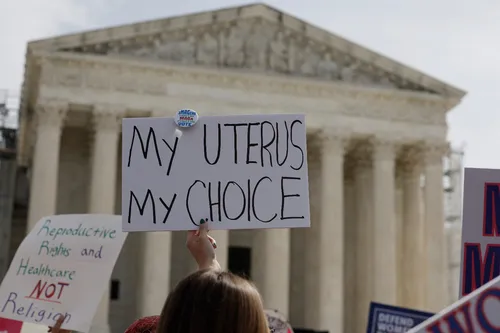
More women in the United States are getting abortions outside the health care system. This is what a study published on March 25th in the journal JAMA, from the American Medical Association, revealed.
The researchers analyzed the six-month period after the Supreme Court decision that reversed the legalization of abortion in the country in 2022. Since 1973, the practice had been legal at the federal level.
“Sadly, this was an impact we had anticipated. It’s something that we know from experience, both in the United States and in other countries”, explained Cristina Rosero to Brazil in fact. She is a legal advisor to the Center for Reproductive Rights.
“We know that every time we have a law restricting reproductive rights, many more women will not be able to use the healthcare system”, comments Rosero, “[elas] they will look for a procedure outside. Not all procedures outside the healthcare system are unsafe, but many of them will pose a risk to the health and lives of these women who seek these procedures.”
Methods
The procedure considered safest is the use of abortion pills, which use the substances mifepristone and misoprostol. In the United States, they are legal and sold in pharmacies across the country.
According to research published in the journal JAMA, the number of abortions using these pills increased by 322% in the period analyzed. In 2023, abortions performed using pills will represent 63% of total procedures.
“According to the WHO, the use of the pills is completely safe. And you have the possibility of having an abortion in the first weeks of pregnancy very safely, and you can have medical supervision. But the woman does not need to go to a clinic or hospital to be treated,” says Rosero.
The pills are still available in the US, but it is not known for how long. The Supreme Court is analyzing a case to suspend the approval of these pills by the FDA, Anvisa in the USA.
If judges decide to ban these medications, women across the country could be left without one of the last safe alternatives for terminating their pregnancies.
But during arguments at the Supreme Court, judges who voted to end abortion rights two years ago were unconvinced about the arguments for banning the sale of the pills.
“It’s possible to argue that Pandora’s box has already been opened,” explains reproductive rights historian Karissa Haugeberg, “the pill is already so widely available in so many parts of the world that making it illegal in the US doesn’t mean it won’t reach the USA. Once again, we could have a system where it is technically illegal, yet available to those who can afford it.”
Pharmacological abortion is not new
History shows that, whether legal or not, abortion medications or pseudo-medications have always circulated in the United States – even centuries before legalization in the 1970s.
“In the colonial United States, until the 19th century, there were advertisements in newspapers and magazines that promised different potions or herbal medicines to get rid of pregnancy”, says Karissa, “women would send 5 or 20 cents and receive a substance, usually pennyroyal, which is an herb that sometimes induces miscarriages, and other times they were just given talcum powder that did nothing.”
The end of the legalization of abortion at the national level, by the way, did not reduce the number of procedures. Quite the opposite.
Between 1981 and 2017, the number of abortions per thousand women fell from 29.3 to 13.5. Between 2020 and 2023, a period that includes the decision that reversed federal legalization, the index rose from 14.4 to 15.7.
The numbers could be even higher, given uncounted illegal procedures that occur in states where termination of pregnancy has become a crime.
“The truth is that no legislation that is restrictive on abortion will prevent abortion from happening”, states Cristina Rosero, “all cases of laws that are of this style, that have these types of restrictions, only make women have that they resort to methods outside the health system and that they seek abortion in other ways, which can create many risks to their health and their lives”.
Professor Karissa Haugeberg, from Tulane University, however, is still optimistic about the future.
“As a historian, I was trained to look at the long term. I think that if we look at each individual court decision in the short term, it will be very depressing and we will want to give up. And we know, as historians, that it was those activists who kept fighting when it was difficult, when it was not popular, when it was risky… it was these activists who allowed us to cross the finish line with Roe”, concludes the historian.
Editing: Rodrigo Durão Coelho
Source: www.brasildefato.com.br

